How could I create a 3D binary matrix/image from a surface mesh in Matlab?
For instance, when I create ellipsoid using:
[x, y, z] = ellipsoid(0,0,0,5.9,3.25,3.25,30);
X, Y and X are all 2D matrix with size 31 x 31.
Edited based on suggestion of @Magla:
function Create_Mask_Basedon_Ellapsoid3()
close all
SurroundingVol = [50, 50, 20];
%DATA
[MatX,MatY,MatZ] = meshgrid(-24:1:25, -24:1:25, -9:1:10);
[mask1, x, y, z] = DrawEllipsoid([0, -10, 0], [6, 3, 3], MatX,MatY,MatZ);
[mask2, x2, y2, z2] = DrawEllipsoid([15, 14, 6], [6, 3, 3], MatX,MatY,MatZ);
mask = mask1 + mask2;
%Surface PLOT
figure('Color', 'w');
subplot(1,2,1);
%help: Ideally I would like to generate surf plot directly from combined mask= mask1 + mask2;
s = surf(x,y,z); hold on;
s2 = surf(x2,y2,z2); hold off;
title('SURFACE', 'FontSize', 16);
view(-78,22)
subplot(1,2,2);
xslice = median(MatX(:));
yslice = median(MatY(:));
zslice = median(MatZ(:));
%help: Also how do I decide correct "slice" and angles to 3D visualization.
h = slice(MatX, MatY, MatZ, double(mask), xslice, yslice, zslice)
title('BINARY MASK - SLICE VOLUME', 'FontSize', 16);
set(h, 'EdgeColor','none');
view(-78, 22)
%az = 0; el = 90;
%view(az, el);
end
function [mask, Ellipsoid_x, Ellipsoid_y, Ellipsoid_z] = DrawEllipsoid(CenterEllipsoid, SizeEllipsoid, MatX, MatY, MatZ)
[Ellipsoid_x, Ellipsoid_y, Ellipsoid_z] = ellipsoid(CenterEllipsoid(1), CenterEllipsoid(2), CenterEllipsoid(3), SizeEllipsoid(1)/2 , SizeEllipsoid(2)/2 , SizeEllipsoid(3)/2 ,30);
v = [Ellipsoid_x(:), Ellipsoid_y(:), Ellipsoid_z(:)]; %3D points
%v = [x(:), y(:), z(:)]; %3D points
tri = DelaunayTri(v); %triangulation
SI = pointLocation(tri,MatX(:),MatY(:),MatZ(:)); %index of simplex (returns NaN for all points outside the convex hull)
mask = ~isnan(SI); %binary
mask = reshape(mask,size(MatX)); %reshape the mask
end

